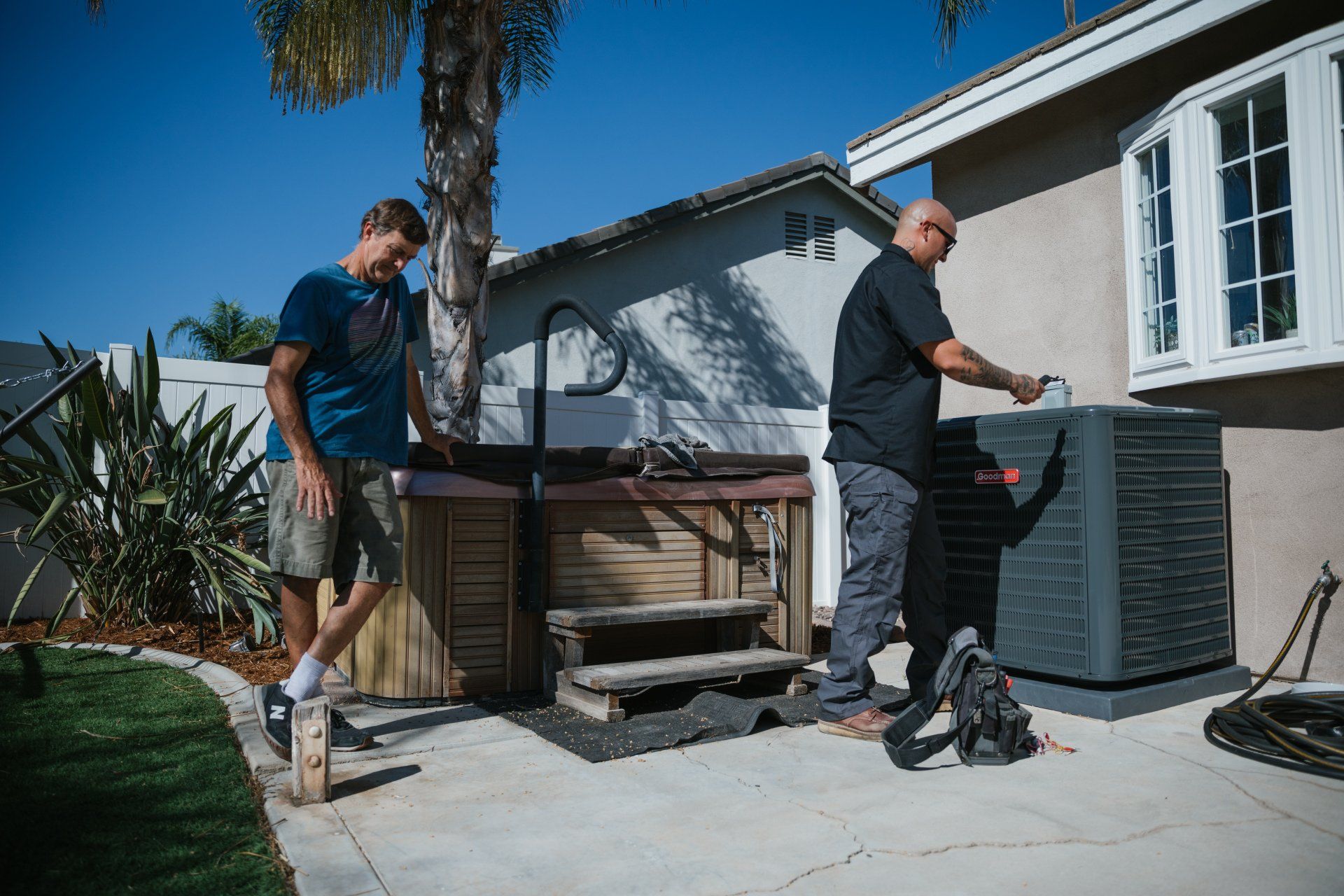Rea's HVAC Blog
We are passionate about the air your home or office, whether it's keeping it cool, warm, or clean.
We'd love to share our expertise
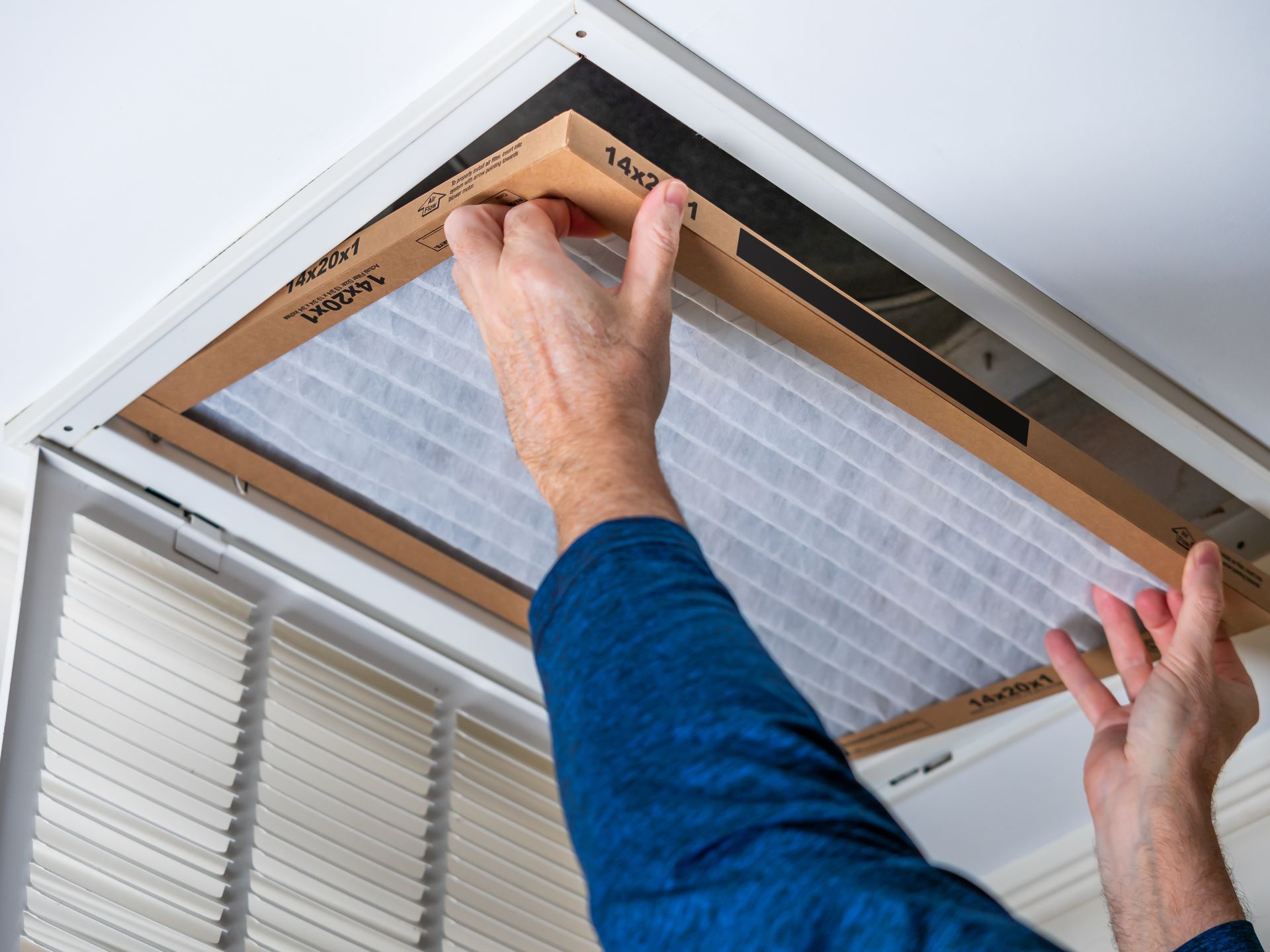
When it comes to indoor air quality, your HVAC system's air filter plays a much bigger role than you might think. It’s not just about trapping dust; it’s about protecting your health, extending the life of your HVAC system, and improving overall comfort in your home. However, with numerous options available, including HEPA filters, MERV-rated filters, and UV air purifiers , how do you determine which one is best suited to your needs? Let’s break down the differences between these filter types and help you choose the best one for your home and lifestyle. What Is a HEPA Filter? High-Efficiency Particulate Air (HEPA) Filters HEPA filters are designed to capture at least 99.97% of particles as small as 0.3 microns. That includes dust, pollen, pet dander, mold spores, and even some bacteria and viruses. Pros: Exceptional filtration, excellent for allergy or asthma sufferers. Removes tiny particles that standard filters may miss. Often used in hospitals, clean rooms, and homes with health-sensitive occupants. Cons: Not typically compatible with standard residential HVAC systems without modification. Can restrict airflow if not installed properly, which may strain your HVAC system. More expensive than standard filters. Best For: Households with severe allergies, asthma, or compromised immune systems, especially if paired with a custom HVAC solution designed to handle HEPA-level airflow resistance. What Is a MERV Rating? Minimum Efficiency Reporting Value (MERV) MERV is a rating system that measures how effectively a filter captures particles of varying sizes. MERV ratings range from 1 to 20, the higher the number, the finer the filtration.
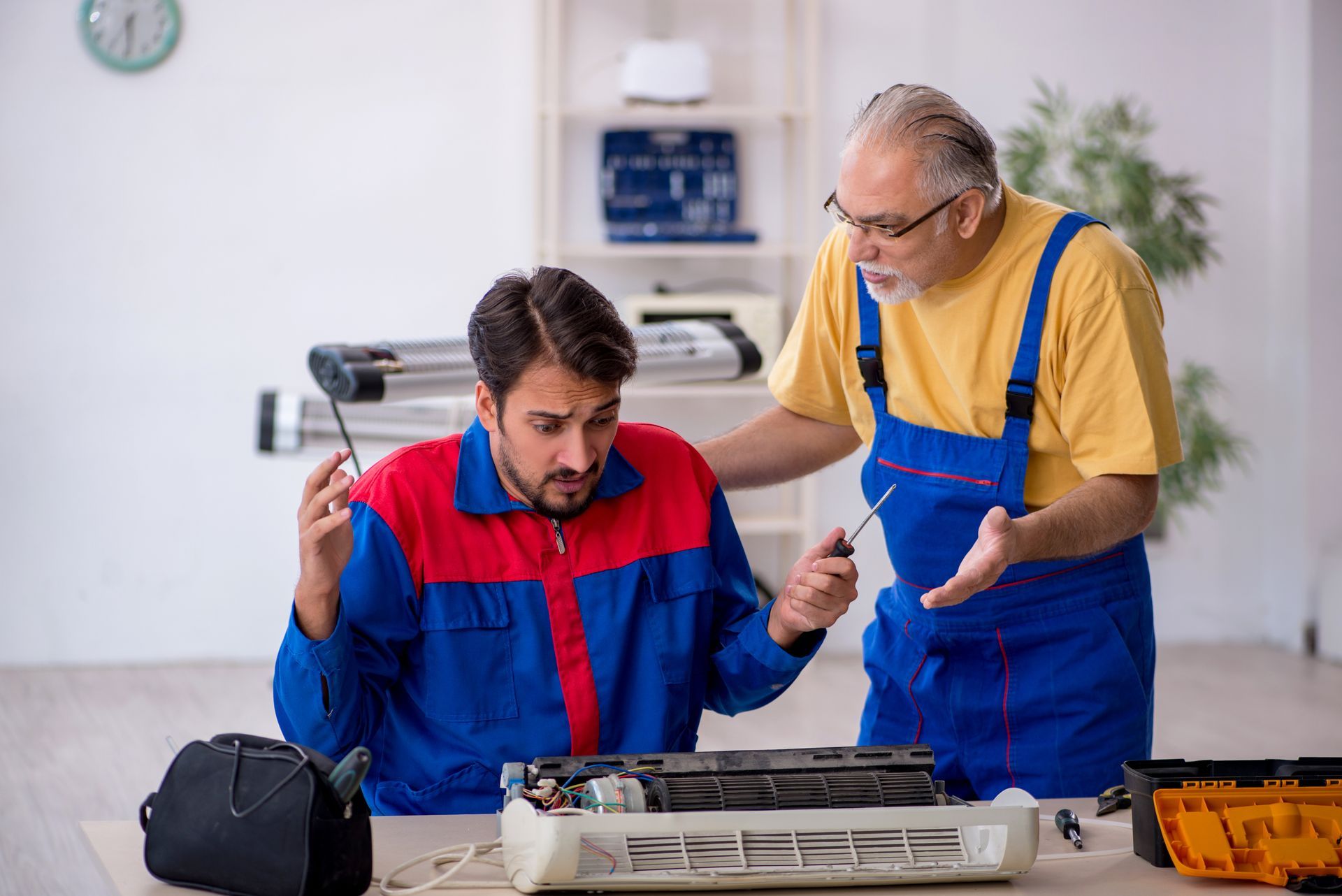
Your HVAC system works hard to keep your home comfortable all year—but like any piece of equipment, it needs regular care to operate efficiently and last as long as possible. Unfortunately, many homeowners unknowingly make mistakes that can lead to higher energy bills, reduced air quality, and even system breakdowns. Here are the top 10 HVAC maintenance mistakes homeowners make—and how to avoid them to keep your system running smoothly. 1. Forgetting to Replace the Air Filter The mistake: Many homeowners wait too long to change their HVAC filters—or forget entirely. Why it matters: Dirty filters restrict airflow, forcing your system to work harder. This can reduce efficiency, cause unnecessary wear and tear, and even lead to system failure. How to avoid it: Check your filters monthly and replace them every 1–3 months, or more frequently if you have pets, allergies, or live in a dusty area. 2. Skipping Annual Maintenance The mistake: Some people assume their system is working fine and skip regular professional check-ups. Why it matters: Small issues can turn into expensive repairs if not caught early. Annual tune-ups help keep your HVAC system efficient and reliable. How to avoid it: Schedule professional HVAC maintenance at least once a year—ideally in the spring for cooling and in the fall for heating. 3. Blocking Vents and Registers The mistake: Furniture, curtains, or rugs sometimes block air vents, reducing airflow throughout your home. Why it matters: Blocked vents can cause uneven heating or cooling and increase the strain on your system. How to avoid it: Make sure all vents and registers are unobstructed. Rearranging furniture may improve airflow and system performance. 4. Closing Too Many Interior Doors The mistake: Some homeowners keep interior doors closed when the HVAC is running to save energy or isolate rooms. Why it matters: Most HVAC systems are designed for balanced airflow. Closing doors disrupts that balance and can cause pressure buildup, reducing efficiency. How to avoid it: Keep interior doors open slightly to allow air to circulate properly throughout your home. 5. Ignoring Strange Noises or Smells The mistake: Homeowners sometimes dismiss odd sounds or smells from their HVAC system. Why it matters: Noises and odors can indicate mechanical issues, electrical problems, or mold growth in the ductwork. How to avoid it: Call a professional if you notice unusual sounds or smells. Addressing them early can prevent significant damage. 6. Incorrect Thermostat Settings The mistake: Setting the thermostat too high or too low or frequently adjusting it throughout the day. Why it matters: Constant changes force your system to work harder, wasting energy and increasing wear. How to avoid it: Use a programmable or smart thermostat to maintain consistent temperatures and optimize energy use. 7. DIY Repairs Without Proper Knowledge The mistake: Attempting to fix HVAC issues without the right tools or experience. Why it matters: DIY repairs can void warranties, damage the system, or create safety hazards. How to avoid it: Perform basic maintenance like changing filters or cleaning vents. Leave complex repairs to licensed HVAC professionals. 8. Not Cleaning the Outdoor Unit The mistake: The condenser unit outside is often neglected and can get clogged with leaves, dirt, or debris. Why it matters: A dirty outdoor unit can’t efficiently release heat, which reduces cooling efficiency and increases energy use. How to avoid it: Check and clean your outdoor unit regularly. Clear at least two feet of space around it for optimal airflow. 9. Failing to Seal Duct Leaks The mistake: Duct leaks often go unnoticed, especially in attics or crawl spaces. Why it matters: Leaky ducts waste energy by letting conditioned air escape, which makes your system work harder. How to avoid it: Have your ductwork professionally inspected for leaks and sealed. This can boost efficiency and comfort. 10. Installing the Wrong-Sized System The mistake: Bigger isn’t always better. Some homeowners assume a larger system will heat or cool faster. Why it matters: An oversized or undersized system can lead to poor performance, uneven temperatures, and higher energy bills. How to avoid it: Always consult an HVAC professional before replacing or upgrading your system. Proper sizing based on home layout and square footage is key. Final Thoughts Regular HVAC maintenance is essential to keeping your home comfortable, system efficient, and energy bills low. Avoiding these common mistakes extends the life of your HVAC system and helps maintain indoor air quality and reduce costly breakdowns. If you’re unsure about the condition of your system or when it was last inspected, it might be time to schedule a professional tune-up . Taking care of your HVAC system now can save you money—and headaches—down the road.
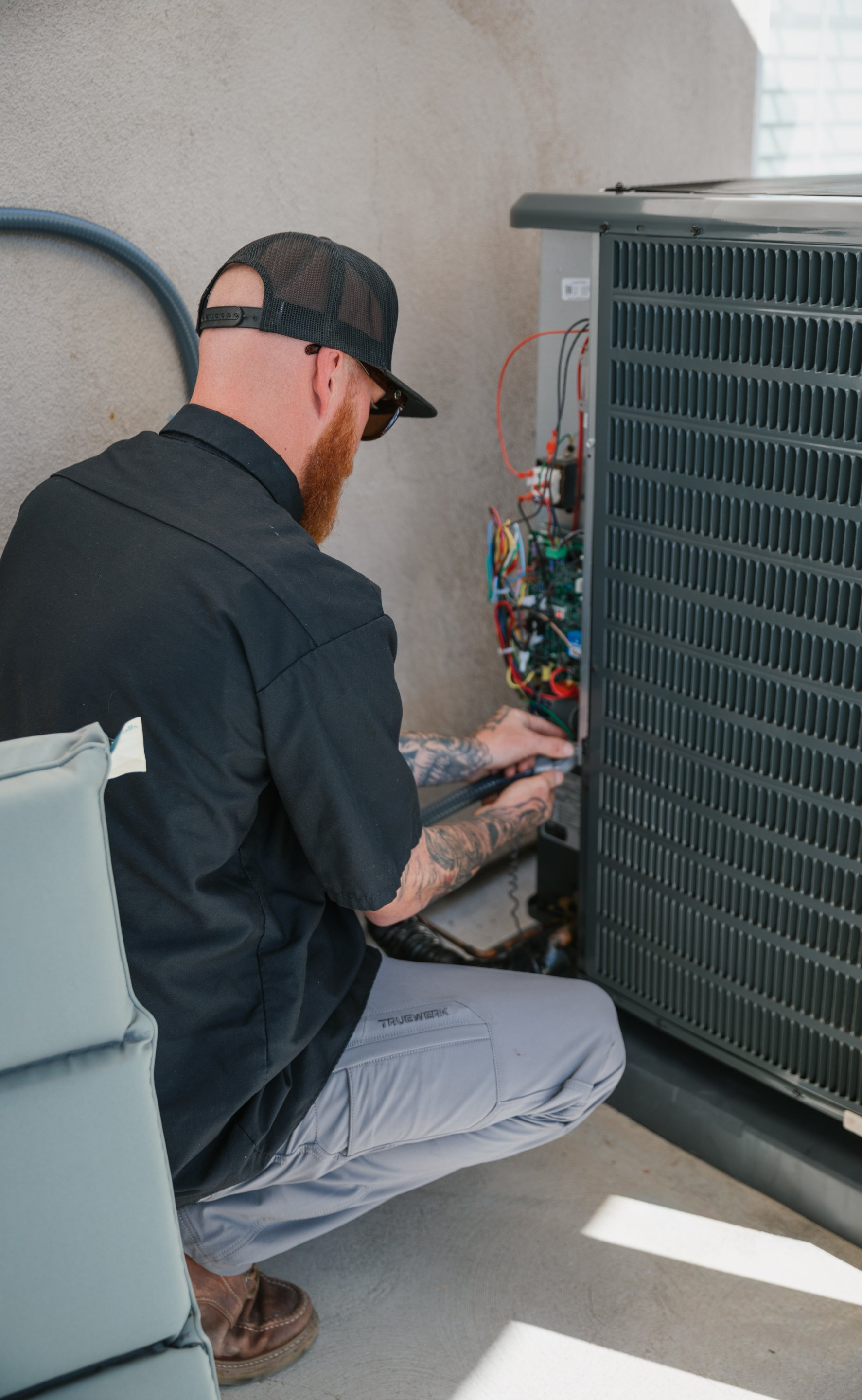
Choosing the right heating system for your home is crucial for comfort, efficiency, and long-term savings. Two of the most common options are heat pumps and furnaces, but the best choice depends on your local climate. The decision isn't one-size-fits-all in San Diego, where the landscape varies from coastal regions to deserts and even mountains. How Heat Pumps and Furnaces Work Heat Pumps: All-in-One Heating and Cooling A heat pump is a dual-purpose system that heats and cools your home by transferring heat rather than generating it. During the winter, it extracts heat from the outdoor air and moves it inside, and in the summer, it reverses the process to function as an air conditioner. ✅ Pros of Heat Pumps Energy-Efficient: Uses electricity to move heat instead of burning fuel. Lower Operating Costs: Uses less energy than gas furnaces in mild climates. Eco-Friendly: Reduces carbon emissions since it doesn’t rely on fossil fuels. Cooling and Heating in One: Eliminates the need for separate air conditioning. ❌ Cons of Heat Pumps Less Efficient in Cold Climates: Struggles to extract heat in freezing temperatures. Higher Upfront Cost: Can be more expensive to install than a furnace. Furnaces: Reliable Heating for Colder Climates A furnace generates heat by burning natural gas, propane, or heating oil (or using electricity in some models). It heats air and distributes it through ductwork to warm your home. Furnaces are better suited for areas with colder winters, where temperatures regularly drop below freezing. ✅ Pros of Furnaces Powerful Heating: Performs well in very cold weather. Lower Upfront Cost: Usually cheaper to install than a heat pump. Long Lifespan: Gas furnaces can last 15-20 years with proper maintenance. ❌ Cons of Furnaces Higher Energy Costs in Mild Climates: Gas furnaces can be overkill for areas with mild winters. Not Environmentally Friendly: Uses fossil fuels, contributing to carbon emissions. No Cooling Function: Requires a separate air conditioner for summer. Best Choice Based on Your Climate in San Diego San Diego County has diverse microclimates, so choosing between a heat pump and a furnace depends on where you live. Coastal San Diego (Mild & Humid) 💡 Best Choice: Heat Pump Coastal areas like La Jolla, Del Mar, and Encinitas have mild winters and cool summers, making a heat pump the most energy-efficient option. Since temperatures rarely drop below freezing, a heat pump can provide sufficient warmth even on chilly nights. Bonus: It also works as an air conditioner during warm summer days, making it a cost-effective year-round solution. Inland/Desert Areas (Hot Summers, Mild Winters) 💡 Best Choice: Heat Pump Cities like Escondido, Poway, and El Cajon experience hot summers and mild winters, meaning a heat pump is ideal for efficient cooling and adequate heating without the need for a powerful furnace. Since desert nights can get chilly, a heat pump will still provide comfortable heating without using excessive energy. Alternative Option: If your winters are particularly cold, consider a dual-fuel system, which pairs a heat pump with a backup furnace for extra warmth when needed. Mountain Areas (Cold Winters, Occasional Snow) 💡 Best Choice: Furnace Mountain communities like Julian, Pine Valley, and Mount Laguna experience much colder winters, often dropping below freezing. A furnace is the best option for these areas, as heat pumps become inefficient when outdoor temperatures get too low. Since temperatures can drop into the 20s or lower, a gas or propane furnace ensures reliable heating regardless of the weather. Alternative Option: A dual-fuel system with a heat pump and a backup furnace can offer year-round efficiency. The heat pump is used for mild weather, and the furnace is used for extreme cold. Comparing Costs: Heat Pump vs. Furnace Long-Term Savings If you live near the coast or in inland areas with mild winters, a heat pump can save you money on heating and cooling costs. If you live in the mountains, investing in a high-efficiency gas furnace can be the better long-term choice, as heat pumps will struggle in extremely low temperatures. Final Verdict: Which One Should You Choose? ✔️ Choose a Heat Pump If: You live near the coast or in a desert area where winters are mild. You want lower energy bills and a more eco-friendly heating system. You like the idea of one system that handles both heating and cooling. ✔️ Choose a Furnace If: You live in the mountains or anywhere with cold winters where temperatures frequently drop below freezing. You want powerful, consistent heating regardless of outside temperatures. Your home already has natural gas hookups, making installation more affordable. Considering a Hybrid Solution? If you’re on the fence, a dual-fuel system combines the benefits of a heat pump and a furnace. This setup allows the heat pump to handle most of the heating (and all of the cooling), while the furnace kicks in only when necessary. This is a great energy-efficient solution for homes in variable climates like San Diego’s inland and mountain regions. Conclusion When deciding between a heat pump and a furnace, your climate plays the biggest role in determining which system will provide the best comfort and efficiency. For coastal and desert areas, a heat pump is the clear winner. For mountain areas, a gas furnace is the more reliable option. A dual-fuel system provides the best of both worlds for areas with mixed climates. Investing in the right HVAC system will maximize efficiency, lower energy costs, and keep your home comfortable year-round . If you're unsure which system is best for your home, consulting an HVAC professional like Rhea’s HVAC can help you make the right choice.

When we think about health, we often focus on our diet, exercise, and sleep habits. But one crucial factor often overlooked is the air quality we breathe inside our homes. Since we spend a lot of time indoors, maintaining good indoor air quality (IAQ) is essential for our health and well-being. Poor indoor air quality can contribute to allergies, respiratory issues, and overall discomfort, especially for those with asthma or other respiratory conditions. Why Indoor Air Quality Matters Indoor air quality refers to the cleanliness and safety of the air within and around buildings, which affects the health and comfort of the occupants. Pollutants in indoor air can range from dust and pet dander to volatile organic compounds (VOCs) from cleaning supplies and building materials. Poor IAQ can lead to: Allergies and Respiratory Issues: Dust mites, pollen, pet dander, and mold are common indoor allergens that can trigger asthma and other respiratory issues. Fatigue and Headaches: Prolonged exposure to poor air quality can lead to fatigue, headaches, and dizziness. Long-Term Health Risks: Long-term exposure to certain pollutants (such as formaldehyde or radon) can increase the risk of serious health issues, including certain types of cancer. Tips for Improving Indoor Air Quality Improving indoor air quality involves a combination of regular maintenance, mindful practices, and utilizing the right equipment. Here are some effective tips for a healthier home: 1. Keep Your Home Clean Dust, pet dander, and other pollutants can quickly accumulate in your home, affecting air quality. Regular cleaning can help keep allergens at bay. Vacuum regularly using a vacuum with a HEPA filter to trap small particles. Dust surfaces with a damp cloth to avoid kicking up dust into the air. Wash bedding and curtains frequently, as they can harbor dust mites. Consider removing or reducing carpet, which tends to trap dust and allergens. 2. Control Humidity Levels Humidity can affect the growth of mold, mildew, and dust mites. High humidity provides an ideal environment for these allergens, while very low humidity can dry out your skin and respiratory passages. Use a dehumidifier in humid areas or during warmer months to keep humidity levels between 30-50%. Ventilate bathrooms and kitchens with exhaust fans to reduce moisture buildup after showers and cooking. 3. Use Air Purifiers Air purifiers can help capture pollutants and allergens, especially in rooms where you spend the most time, like bedrooms and living rooms. HEPA filters are recommended for capturing small particles, such as pollen and pet dander. For those with severe allergies, consider using a purifier with activated carbon, which can help absorb odors and VOCs. 4. Limit Chemical Pollutants Chemical pollutants like VOCs can come from various household items, including cleaning products, paint, and even furniture. These chemicals can contribute to poor indoor air quality. Choose low-VOC or VOC-free paints and cleaning products. Avoid air fresheners and scented candles, which can release harmful chemicals. Store chemicals in tightly sealed containers and keep them out of main living areas. 5. Ventilate Your Home Bringing fresh outdoor air inside is one of the best ways to dilute indoor pollutants. Open windows and doors when possible, especially when cooking, cleaning, or using chemicals. If you live in an area with good outdoor air quality, regular ventilation can help improve indoor air. The Role of Your HVAC System in Indoor Air Quality Your HVAC system is essential to maintaining indoor air quality, as it continuously circulates and filters the air in your home. Here’s how your HVAC system can help—and what you must do to keep it functioning optimally. 1. Change Air Filters Regularly Your HVAC system’s air filters are the first defense against indoor air pollutants. Filters trap dust, pollen, and other particles, preventing them from recirculating in your home. Replace filters every 1-3 months depending on your system and usage. For homes with allergy sufferers, consider upgrading to HEPA filters or filters with a higher MERV rating (Minimum Efficiency Reporting Value). These can capture smaller particles that standard filters may miss. 2. Invest in a Whole-Home Air Purifier Many HVAC systems offer installing a whole-home air purifier directly into the ductwork. To capture various pollutants, these systems use advanced filtration methods, including UV lights and electrostatic filters. UV lights can kill bacteria, mold spores, and viruses as air passes through the system. Electrostatic filters create a static charge to capture and hold airborne particles more effectively than standard filters. 3. Keep Ducts Clean Over time, dust, dirt, and even mold can accumulate in your ductwork, reducing air quality and efficiency. Dirty ducts can circulate pollutants throughout your home each time your HVAC system runs. Schedule duct cleaning every 3-5 years , or sooner if you notice excessive dust or mold growth around vents. Regularly check for any visible dirt or mold around ducts and vents, and have them professionally cleaned if needed. 4. Maintain Proper Ventilation Your HVAC system should have proper ventilation to maintain fresh air flow. Stale air can trap pollutants, worsening indoor air quality. Some systems have energy recovery ventilators (ERVs) or heat recovery ventilators (HRVs) , which bring fresh air in and expel stale air without compromising energy efficiency. Consider installing ventilation systems if your home is tightly sealed. They can improve IAQ by bringing in fresh air and removing indoor pollutants. 5. Schedule Regular HVAC Maintenance Like any other system in your home, your HVAC system requires regular maintenance to function efficiently and maintain air quality. A professional HVAC technician can inspect, clean, and optimize your system, reducing the risk of pollutant buildup. Schedule professional maintenance at least once a year , ideally before the start of heating or cooling seasons. Routine maintenance includes checking refrigerant levels, cleaning the evaporator and condenser coils, inspecting ductwork, and more. Conclusion Indoor air quality is critical to creating a healthy, comfortable home environment. You can significantly reduce allergens and pollutants in your air by keeping your home clean, managing humidity, using air purifiers, and optimizing your HVAC system. Remember, your HVAC system is an invaluable ally in the fight for cleaner air, but it requires regular maintenance and care to be effective. Whether you're dealing with seasonal allergies, asthma, or just want to breathe easier, these tips will help you take control of your indoor air quality. Embrace these practices to create a healthier home, one breath at a time.
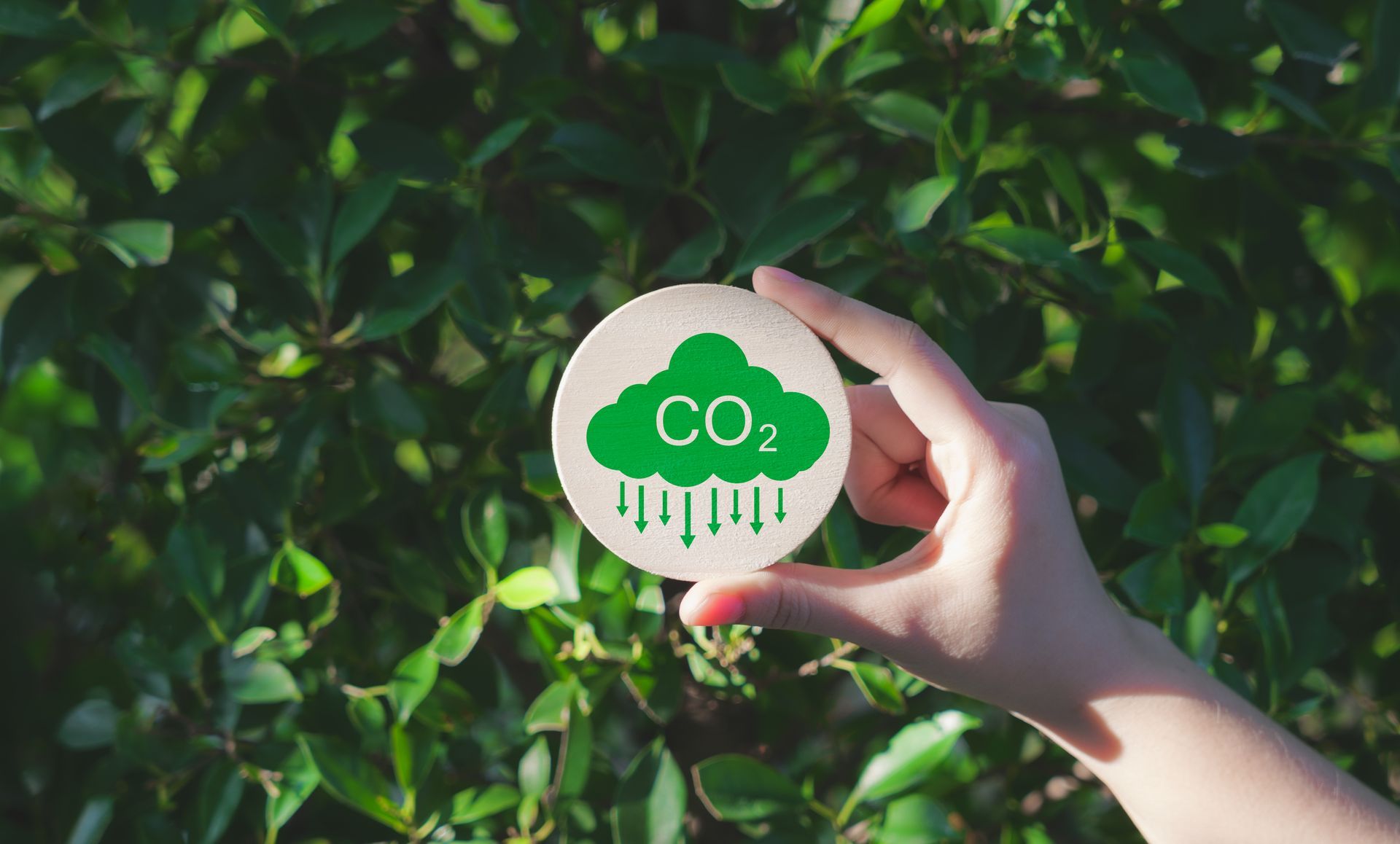
With climate change becoming a pressing issue, more homeowners are looking for ways to reduce their environmental impact. Heating, ventilation, and air conditioning (HVAC) systems are among the largest energy consumers in most homes, meaning they play a significant role in our overall carbon footprint. Fortunately, several eco-friendly solutions and practices can make HVAC systems more sustainable while also potentially saving you money on energy bills. 1. Upgrade to Energy-Efficient HVAC Equipment Investing in energy-efficient equipment is one of the most effective ways to make your HVAC system more eco-friendly. Look for systems with high energy-efficiency ratings, which consume less energy and produce fewer emissions. Choose ENERGY STAR® Certified Systems: HVAC systems with the ENERGY STAR label meet strict energy efficiency guidelines set by the U.S. Environmental Protection Agency. These systems consume less electricity and can significantly reduce your carbon footprint. Consider Heat Pumps: Heat pumps, including air-source and geothermal models, are highly efficient for heating and cooling. They transfer heat rather than generate it, which makes them more efficient than traditional furnaces or air conditioners. Geothermal heat pumps are especially eco-friendly, using the stable underground temperature to heat and cool your home. Look for High SEER and AFUE Ratings: SEER (Seasonal Energy Efficiency Ratio) and AFUE (Annual Fuel Utilization Efficiency) ratings indicate the energy efficiency of air conditioners and furnaces, respectively. The higher the SEER or AFUE rating, the more efficient the system. A SEER rating of 16 or higher for air conditioners is considered efficient, while furnaces with an AFUE of 90% or higher are preferred for sustainability. 2. Install a Smart Thermostat Smart thermostats offer a simple way to make your HVAC system more eco-friendly. By optimizing heating and cooling patterns based on your habits, these devices help reduce energy waste, ensuring your system only runs when needed. Remote Control and Scheduling: With a smart thermostat, you can control your HVAC system remotely via a smartphone app, allowing you to adjust temperatures even when you're away. Many models allow you to create schedules based on your daily routines, so you’re not heating or cooling an empty home. Learning Capabilities: Many smart thermostats "learn" your preferences over time and automatically adjust settings for maximum efficiency. For example, they may reduce heating or cooling at night when everyone is asleep or the house is empty. Energy Reports: Some smart thermostats provide insights into your energy consumption, helping you identify ways to reduce your usage and carbon footprint further. 3. Embrace Proper Insulation and Sealing Poor insulation and leaky windows or doors make your HVAC system work harder, consuming more energy and increasing your carbon footprint. Proper insulation and sealing help maintain a stable indoor temperature, reducing the load on your HVAC system. Insulate Key Areas: Ensure your attic, walls, and floors are properly insulated. Insulation helps retain heat during the winter and keeps your home cool in the summer, making your HVAC system more efficient. Seal Gaps and Cracks: Seal gaps or cracks around windows, doors, and ductwork to prevent air leakage. Weatherstripping and caulking are effective, affordable ways to improve insulation and reduce energy loss. 4. Prioritize Regular HVAC Maintenance Regular maintenance is essential for keeping your HVAC system running efficiently. A well-maintained system consumes less energy and produces fewer emissions, extending the lifespan of your equipment. Change Air Filters Regularly: Dirty filters restrict airflow, forcing your HVAC system to work harder. Replacing filters every 1-3 months can improve system efficiency, enhance indoor air quality, and lower energy consumption. Clean and Inspect Coils and Fins: Dust and debris on the condenser and evaporator coils reduce your system's efficiency. Clean the coils at least once a year to ensure they can effectively transfer heat. Schedule Annual Tune-Ups: Hire a professional HVAC technician to perform annual tune-ups on your system. Regular inspections can identify potential issues early, ensuring your system operates efficiently. 5. Use Alternative Energy Sources Switching to renewable energy sources, like solar or wind, can make your HVAC system significantly more eco-friendly. Renewable energy reduces reliance on fossil fuels, cutting down your carbon emissions. Solar Power: Installing solar panels can allow your HVAC system to run on clean, renewable energy. Many states offer incentives and tax credits for solar panel installation, which can help offset the upfront cost. Solar-Powered HVAC Systems: Some manufacturers offer solar-powered systems that directly use energy from solar panels. These systems can provide heating and cooling without relying on the grid, making them one of the greenest HVAC solutions. 6. Optimize Ventilation Proper ventilation can help regulate indoor temperatures naturally, reducing the need for artificial heating or cooling. Optimizing your ventilation system can help reduce your HVAC system’s workload and decrease energy consumption. Install Energy Recovery Ventilators (ERVs): ERVs bring in fresh air while minimizing energy loss. They recover the energy from exhausted indoor air and transfer it to incoming fresh air, providing efficient ventilation without sacrificing energy efficiency. Use Ceiling Fans: Ceiling fans can improve air circulation and help keep your home comfortable. During the summer, set the fan to spin counterclockwise to create a cooling effect. In winter, reverse the direction to push warm air down from the ceiling. Take Advantage of Natural Ventilation: During cooler months, open windows and doors to allow fresh air to flow through your home. This can help reduce the need for cooling and improve indoor air quality. 7. Adopt Energy-Saving Habits Small changes in your daily habits can add to significant energy savings over time, reducing your carbon footprint and utility bills. Adjust Your Thermostat: During the summer, set your thermostat to a slightly higher temperature (around 78°F) when you’re home, and even higher when you’re away. In the winter, set it lower (around 68°F) while you’re home and bundle up with blankets or warm clothes. Close Blinds and Curtains: In the summer, keep blinds or curtains closed during the hottest part of the day to block out sunlight and reduce cooling needs. In the winter, open them during the day to allow sunlight to naturally warm your home. Avoid Using Heat-Generating Appliances: Avoid using heat-producing appliances (like ovens and dryers) during the hottest part of the day in the summer. This can reduce the need for cooling. Conclusion Reducing your carbon footprint through eco-friendly HVAC solutions is a win-win for the environment and your wallet. By upgrading to energy-efficient equipment, embracing smart technology, improving insulation, and adopting sustainable practices, you can significantly decrease the environmental impact of your HVAC system. Not only will these steps help you save on energy costs, but they will also make your home a healthier and more comfortable place to live. By making these eco-conscious choices, you can take meaningful action toward a more sustainable future, ensuring that your home remains comfortable while minimizing its impact on the planet.

Investing in a new HVAC system or scheduling a major repair can be a significant expense for any homeowner. However, many homeowners overlook one crucial aspect of this investment: the HVAC warranty. Understanding and making the most of your HVAC warranty can save you money, provide peace of mind, and protect you from unexpected repair costs. In this post, we’ll explore the different types of HVAC warranties, explain the fine print, and offer advice on maximizing the benefits of your coverage. Types of HVAC Warranties When purchasing an HVAC system or scheduling repairs, it’s important to know that several types of warranties may apply. Here's a breakdown of the most common types: 1. Manufacturer’s Warranty The manufacturer’s warranty is provided by the company that makes the HVAC equipment (such as the furnace, air conditioner, or heat pump). It typically covers defects in the materials or workmanship and lasts 5 to 10 years, depending on the manufacturer and model. Parts Warranty: This covers specific components of your HVAC system, such as the compressor, coils, or fan motor. It may not cover the cost of labor needed to replace defective parts. Compressor or Heat Exchanger Warranty: Some manufacturers offer extended warranties on major components, like the compressor or heat exchanger, which could be covered for 10-20 years or even the system's lifetime. 2. Labor Warranty Unlike the manufacturer’s warranty, which usually covers parts only, the HVAC installer or contractor typically provides a labor warranty. Labor warranties cover the cost of labor associated with repairing or replacing defective parts. Labor warranties tend to be shorter, often lasting 1-2 years, though some contractors may offer extended warranties for an additional fee. 3. Extended Warranty Many manufacturers or HVAC service providers offer extended warranties that allow you to prolong the coverage of parts or labor beyond the original term. These warranties can add several years to your protection and cover parts and labor, depending on the specific terms. 4. Service Agreement or Maintenance Contract Some HVAC contractors offer service agreements or maintenance contracts. These contracts aren’t technically warranties but can cover annual tune-ups, inspections, and minor repairs. Some service agreements may include priority service or discounts on labor and parts. Key Points to Understand About Your HVAC Warranty 1. Registration Requirements Most HVAC manufacturers require homeowners to register their system within a specific time frame—typically within 60 to 90 days of installation—to activate the full warranty. If you fail to register your equipment, you may only receive the base warranty coverage, usually shorter. Tip: Don’t forget to register your HVAC system after installation. This ensures you receive the full manufacturer’s warranty. 2. Regular Maintenance is Crucial Many HVAC warranties are contingent on regular mainte nance. Your warranty may be voided if you don’t maintain your system, such as scheduling annual tu ne-ups and cleaning or replacing filters. Keeping your system in good working condition ensures efficiency and protects your warranty rights. Tip: Keep a record of all maintenance visits and receipts, as these can be required in the event of a warranty claim. 3. Authorized Service Providers Only HVAC manufacturers often require that any repairs or warranty work be performed by an authorized technician. Using a contractor who is not certified by the manufacturer may void the warranty. Always check that your service provider is authorized before scheduling repairs or maintenance. Tip: Work with the contractor who installed your HVAC system or ask for a list of authorized service providers from the manufacturer. 4. Warranty Exclusions Be sure to read the fine print of your HVAC warranty. Some warranties exclude certain types of repairs, such as improper installation, failure to follow operating instructions, or external factors like power surges. Additionally, cosmetic damages (such as rust or fading) are generally not covered. Tip: Familiarize yourself with the exclusions and limitations of your warranty to avoid surprises in the event of a repair. 5. Transferring Your Warranty If you plan to sell your home, check whether the HVAC warranty is transferable to the new homeowners. Some warranties can be transferred, while others may require a fee or may only apply to the original owner. Tip: Transferring the warranty can add value to your home when selling, as it reassures the buyer that the HVAC system is protected. How to Make the Most of Your HVAC Warranty 1. Keep All Documentation Keep a dedicated file for all your HVAC paperwork, from installation receipts to maintenance and repairs records. Easy access to this documentation can expedite warranty claims and ensure you’re not denied coverage due to lack of proof. 2. Schedule Regular Maintenance Staying on top of regular maintenance, such as cleaning or replacing filters, checking refrigerant levels, and inspecting ductwork, will keep your system running efficiently and prevent warranty-related issues. 3. Review Warranty Coverage Before Repairs Before scheduling any major repairs, check whether the part or service is covered under warranty. If it is, make sure to use an authorized service provider. Even if the warranty covers only parts and not labor, this can save you significant repair costs. 4. Consider an Extended Warranty An extended warranty might be worth the investment if you plan to stay in your home for many years. It provides added peace of mind and can save you from out-of-pocket expenses in the event of a major breakdown. Conclusion Navigating HVAC warranties doesn’t have to be overwhelming. By understanding the different types of warranties, staying on top of maintenance, and keeping thorough records, you can make the most of your HVAC warranty and ensure your system stays covered. Whether installing a new system or maintaining an existing one, being informed about your warranty options will help you protect your investment and keep your home comfortable for years to come.


